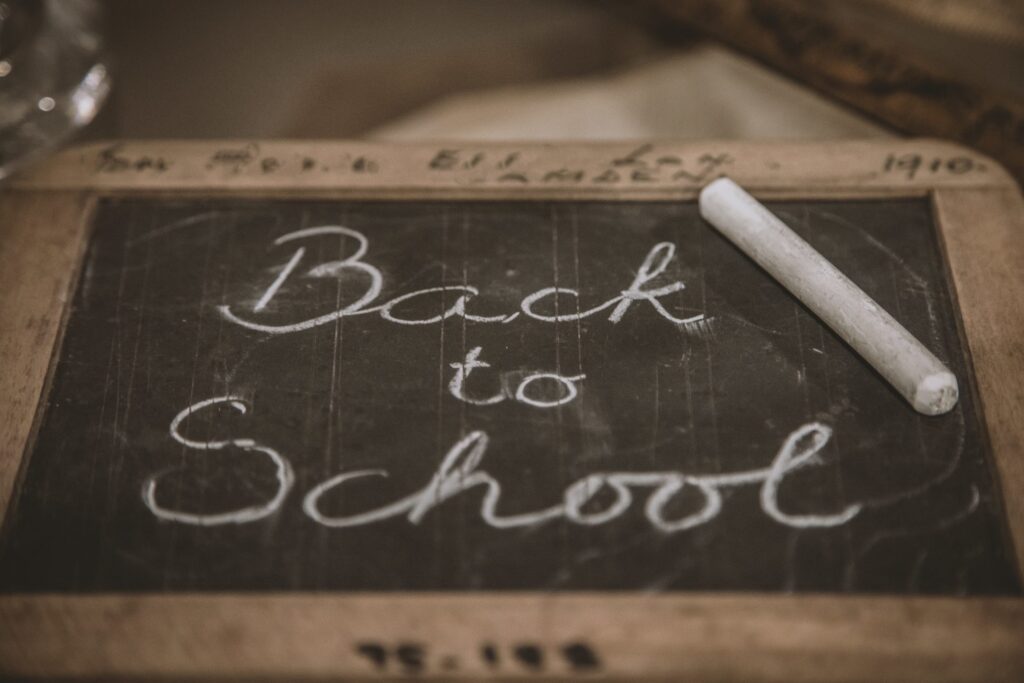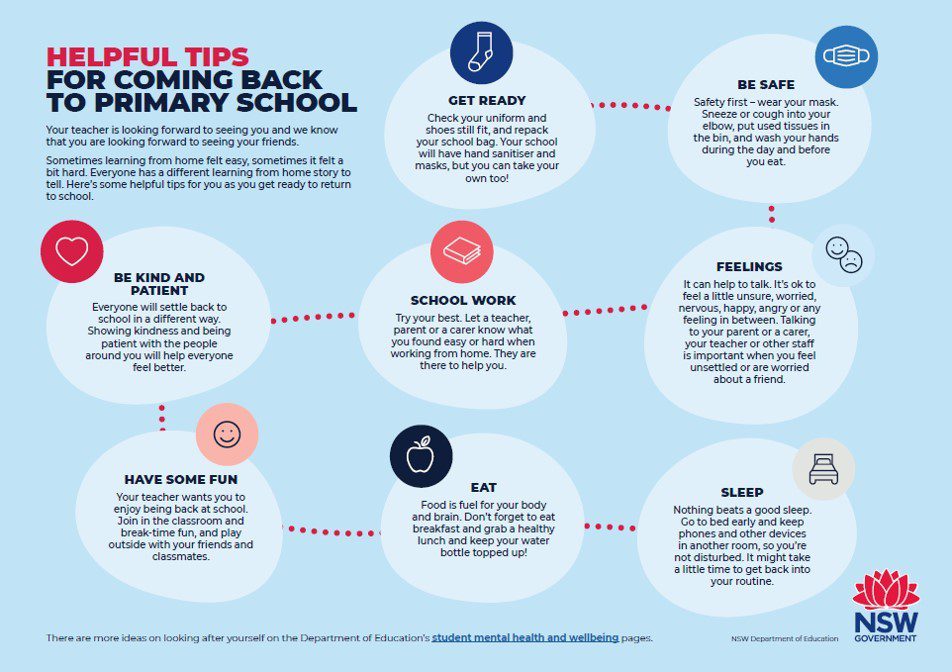Preparing your child for their return to school

It feels like it should be a relief for things to begin getting back to normal after restrictions and lockdowns, but from a child’s perspective, change can be unsettling and may be a source of anxiety. Making sure your child has the appropriate tools to help them cope with the changes involved in going back to school can ease the transition and make it less stressful.

Logistics
There is a lot of information to take on board at the moment regarding the response to Covid. When it comes to schools, the logistics are no less confusing. From hybrid learning to staggered start times, or perhaps siblings on different timetables, not to mention the ever-changing rules and guidelines regarding measures to keep everybody as safe as possible. It’s hard for us adults to keep up, but for kids it can seem overwhelming. Keep yourself up to date with the latest rules and regulations in the Illawarra HERE.
Prepare and plan
Information is power, especially if your child finds change difficult. Your child’s school will likely communicate what to expect when children return to the classroom, but if it might be beneficial for your child you can always ask for more details. Knowing what to expect at the school gate, in the lunchroom and how things will change at playtime will help children feel mentally prepared. Masks, hand hygiene and distancing are also likely to play a part in the school day, which is a big change but it can also be useful and comforting to focus on how that will keep everyone safe, and to talk about what will be the same as before. Try making lists together with your child to help prepare for the return to school, because involving them in getting school bags and uniform ready can help them visualise going back and therefore to feel more prepared mentally.
Routine and structure
To give kids some stability routine is useful. And with the return to learning in person, it’s sensible to prepare children for the change of pace this will bring. Shift bedtimes back to normal school night routine, and begin to introduce more structure to the day at home to reflect what life will be like when they are back full time in school. If your family has slipped into the habit of not getting dressed til the afternoon, or not preparing for the day ahead in the same way you would when everyone actually has to leave the house, now’s the time to get used to the morning rush again. Better to do it now so that the first day of school isn’t such a shock to the system!
Talk it over
Encourage resilience in your child by keeping lines of communication open and normalising any worries they may have. After all, they are not alone – there can’t be many people who have faced a global pandemic without some level of anxiety. Create opportunities for them to open up to you about how they are feeling, whether that’s around the table, when you are in the car, or doing something fun together. Make sure your kids know that you take their worries seriously – don’t just brush over them as unimportant. It is also crucial not to put your expectations on to them by saying “won’t it be fantastic to get back to school?” as this may not be how they are feeling about it. One thing that can be reassuring for children to know is that the majority of children on the planet have had to ensure a similar break from normal school, and that most of them will also be feeling anxiety or at least a few wobbles in the run up to returning.
Strategies to help anxious children
If you are concerned that your child will find the transition back to in-person school especially challenging, talk to the teachers and school leaders so they are aware and can offer extra support. Meanwhile you can arm your child with some tools to help them cope if they feel overwhelmed. One of the best ways to stem an anxiety attack is to ground yourself in the present and focus on only the things that are around you in that moment. So practise with your child how to achieve this. Notice and put into words five things you can see, four things you can touch, three things you can hear, two things you can smell and one that you can taste. Breathing exercises can be effective at bringing the focus back to the body and into the present. Taking a break to do some physical exercise can help disperse anxiety, but obviously the school staff would need to facilitate this as appropriate.
Practise school skills
Your child hasn’t been socialising as much as usual, so where possible it’s a good idea to arrange for them to spend time with friends before school reopens. This will remind them of certain skills that might be rusty after staying apart for so long, and will increase the sense of familiarity on the first day. After so much screen based learning, practical school skills such as writing and concentrating for extended periods may not be fresh. Perhaps build a little bit of fun practise (writing and carrying out quizzes, treasure hunts etc) into the week prior to returning to school just to flex those muscles ready for the return.
Good luck!
CLICK HERE for Helpful Tips for Primary School Students Returning to School c/o the NSW Govt’s Education website.
Article Author: Martha Thurstan

